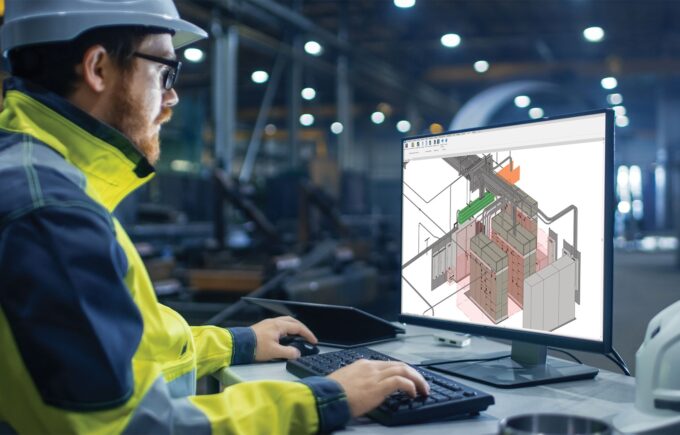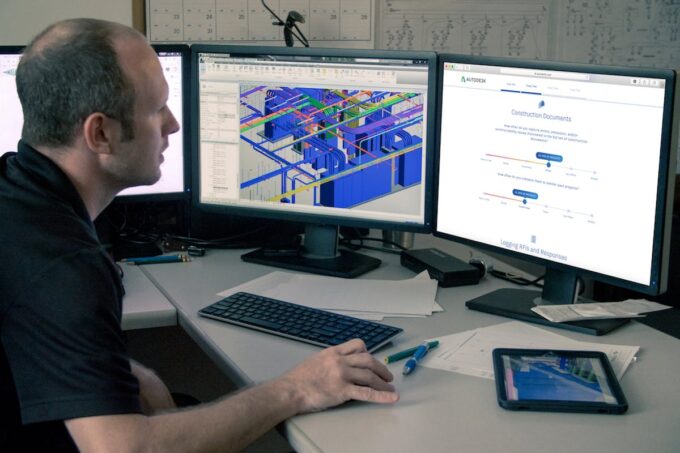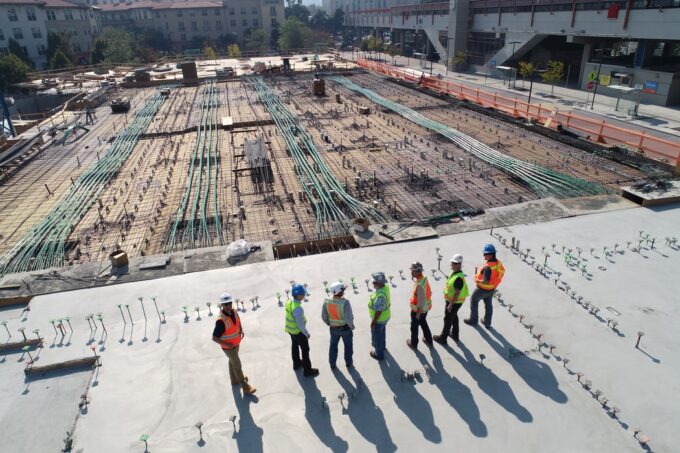BIM technology increases the company’s productivity and efficiency by up to 30%. Also, it saves valuable time and resources as possible design errors are detected long before construction begins. It is therefore not surprising that more and more companies are switching to BIM technology as it becomes necessary to take on larger projects.
In the construction sector, the word BIM, short for “Building Information Modeling”, is currently very popular. BIM models consist of BIM objects, the digital equivalent of actual construction products. In classical building planning, plans are made in several stages, sent to the competent authorities, and then reviewed once more. BIM is a new integrated and digital building planning system that can be said to be a giant database. As part of this, all building-specific objects (e.g. walls, doors, windows, etc., as well as building techniques) are digitally recorded, combined, and networked into a unique 3D model on which all stakeholders work.
Through BIM, construction is going through a digital revolution. This means that BIM is information modeling and information management in a team environment. All team members should work to the same standards. It creates value from the combined efforts of people, processes, and technology. We can say it is actually a way of working together.

Img source: ecmag.com
The main results of successful implementation of BIM are increased accuracy and quality of projects, reduction or complete elimination of errors and project changes during construction, increased productivity by an average of up to 40%, increased market competitiveness, reduced employee stress, and reduced maintenance costs, which ultimately brings significant financial savings.
Conventional CAD programs can very rarely implement this step in the planning of the entire life cycle of an object. Therefore, the support and services provided by the BIM model are of great importance for building management.
The Building Information Model (BIM) improves the way architects, engineers, contractors, and installers work together at every step of the design and construction process. As projects are often adapted during the construction process, it is now possible for everyone to receive the same information at the same time and to work on the same plan.
How does it function?

Img source: archinect.net
It all starts with the creation of an intelligent 3D model that serves as a platform for data exchange for all partners involved in the construction and coordination of works. So, it is necessary for this part of the job to be done professionally because there is no room for mistakes. Visit mesgroup.asia to learn more about it.
Today, this technology has been a stimulus for development, and if you had to set up special complex and professional programs to work with it, today there are “abbreviated” and simple programs for smartphones and tablets. This allows users and developers quick and easy access to the BIM model. This takes the technology to a new level.
What are the advantages of BIM technology?
One of the most important features of this technology is its practicality and ease of use. It is a great advantage when you have 3D visualization in front of you because in that way you can attach the project to the customer, and it will also mean a lot if you need design services.
In addition, the project can be modified according to needs, which significantly affects the likelihood that some mistake will be made. The introduction of BIM technology will reduce financial costs and significantly shorten the time of introduction of the facility.
It is important to point out that the introduction of BIM approaches does not stop or reduce the work, importance, and responsibility of each designer, supervising engineer, or construction manager, but gives them all a tool that integrates the results of their engineering tasks, reduces the possibility of non-compliant technical solutions, and implementing change in the project. It should also be noted that the guidelines in the guidelines are recommendations, not obligations.
Some of the other benefits of the 3D model are increased productivity on the construction site, coordination of the construction project with the help of the model, visualization of construction, reduced construction time, more accurate project documentation, as well as lower construction prices. So, we see that this type of investment is very useful and profitable.
Use of BIM in the world

Img source: unsplash.com
We would say that the use of BIM technology in the world is progressing, but also that the main reason for its slow spread is the lack of knowledge, as well as some resistance and distrust of experts. The BIM model can become a common model only if all contracting parties have the appropriate BIM software. So, buying BIM software is a smart investment only if all the workers working on the project are prone to digitalization. Otherwise, it will do more harm than good.
Costs
The cost of licensing or maintaining this software is something you have to count on. In addition, you need to reckon with ongoing investments in the form of the cost of training your employees or hiring professionals. You should not underestimate the time that your employees need to work with the BIM model in addition to their usual work.
The effectiveness of the BIM process depends on the degree of cooperation of the various participants in the project. Therefore, the more information is exchanged, the greater the efficiency of the BIM process. Constant exchange of working models and documents is recommended. Regarding key exchanges at certain stages of the project, it is advisable to develop an information exchange plan that defines (at least) the file format, model content, and levels of development.
The future of Building Information Modeling

Img source: unsplash.com
Digitization is present in many aspects of human life, and it is believed that a bright future awaits it in construction as well.
To protect yourself from any risks associated with electronic communication, it is recommended that you have an electronic data exchange agreement with any party with whom you share individual BIM files. Be sure to specify restrictions on the use of attached CAD or BIM files, protect copyright and intellectual property, and prohibit the use of files for non-project-related purposes.







